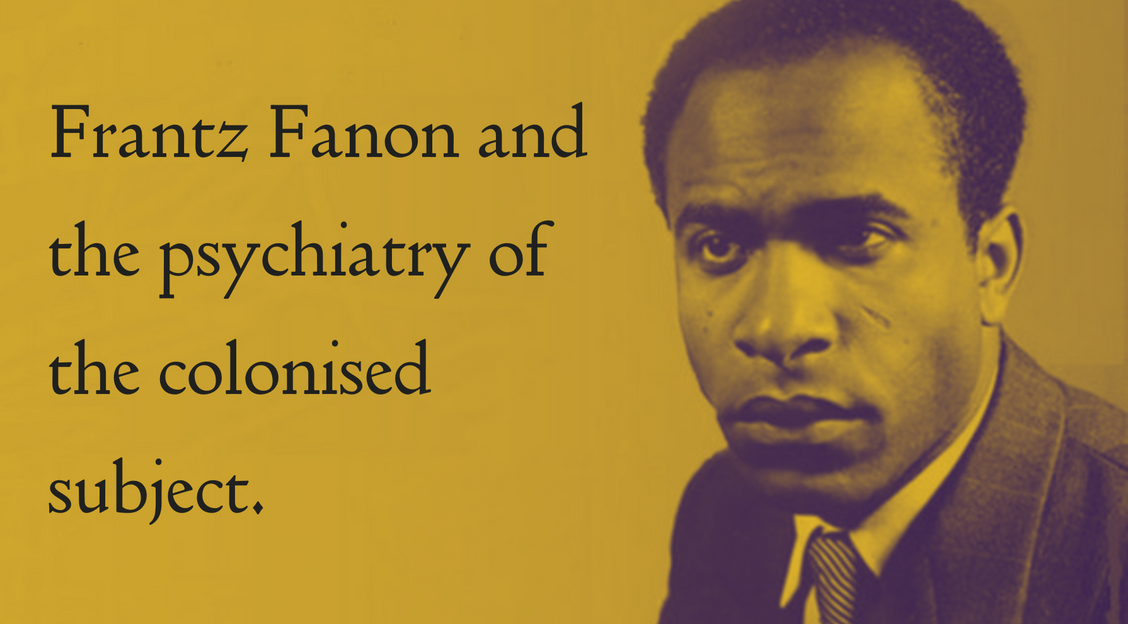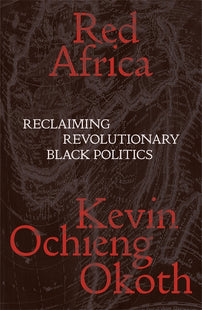Frantz Fanon and the Psychiatry of the Colonised Subject
“Independence, he hoped, would produce the spiritual and material conditions for the emergence of a new, decolonised subject.”

What was it about Algeria that led Fanon, a Black man from Martinique, to identify with it so closely? The plight of Algerians in France opened his eyes to how other racialised groups experienced everyday racism. In his psychiatric study on ‘The North African Syndrome’ (1952), Fanon analyses the mysterious illness tormenting North Africans in France. Building on Freud’s concepts of phylogeny and ontogeny, Fanon develops a sociogenic approach to the neuroses and pathologies that afflict racialised or colonised subjects.
While ‘ontogenic approaches address the individual organism’ and ‘phylogenic approaches address the species’, the sociogenic ‘pertains to what emerges from the social world, the intersubjective world of culture, history, language and economics’. By showing that these neuroses and pathologies were socially produced, not ontologically given, Fanon was challenging the racist prejudices of psychiatrists who dismissed these unexplained pains as imaginary illnesses.
Taking the colonial construction of the North African as their starting point, they had glossed over the problems of ‘alienated embodiment’ which afflicted their patients. In fact, it was racist society that was making Algerians sick – and the psychiatric hospitals were only making things worse. Fanon soon realised that there could be no psychiatric treatment for problems of social alienation; only the total transformation of social relations would cure racialised and colonised subjects of their illness.
We might also read Fanon’s turn to Algeria through William Gardner Smith’s novel The Stone Face, first published in 1963, a year after Algerian independence and two years after Fanon’s death. Smith’s protagonist, Simeon Brown, a Black American man who loses an eye in a brutal racist attack early in the novel, has made his way to Paris to escape the urge to enact revenge by killing a white person. He arrives in a Paris we are all too familiar with from Black literary accounts, a Paris where Black Americans can seemingly escape the all-encompassing racism of the United States – as Baldwin put it, ‘I could not hate the French, because they left me alone’.
But earlier in the century, Claude McKay had already complained that ‘the Negro intelligentsia [in Paris] is completely on the side of France’, and this remains true in Smith’s novel: the little group of expats is content to frequent the cafés of the Left Bank, paying little attention to the plight of other racialised people – especially ‘les Arabes’ – in the French capital. For Simeon and his friends, Paris offers an antidote to the United States. Here, they can at last participate in the rituals of (white) bourgeois society. In any case, they are reluctant to support the Algerian struggle and would rather stay out of trouble.
French society is obviously still racist, just not toward Simeon and his group of émigré friends. When Simeon is involved in a fight after intervening in a sexual assault, he realises he is no longer the ‘other’ to the French. The officers let Simeon go while the Algerian man he fought
is arrested. When the Algerian man, Hossein, sees Simeon the next day, he reminds Simeon that he is in a privileged position in France. (‘Hey! How does it feel to be a white man? . . . We’re the niggers here!’) Though Hossein keeps his distance at first, his friend Ahmed, a young Algerian medical student, takes a liking to Simeon. As Simeon begins to feel more connected to the Algerians in Paris, he tries to bring up their situation with his Black friends. They, however, brush aside any discussion of their privilege, claiming that ‘Algerians are white people . . . when they’re with Negroes’.
Of course, the Algerians harbour prejudices of their own; in a debate with Simeon’s girlfriend, a Polish concentration camp survivor, one of Ahmed’s friends reveals his antisemitism, much to Simeon’s dismay. But when two Algerian women tell him about the rape and torture committed by French soldiers in Algeria, he decides to join the struggle.
The Stone Face reaches its climax when Simeon joins an FLN-organised demonstration in Paris. What follows is a vivid description of the Paris massacre of 1961, where police murdered hundreds of Algerians and threw their bodies in the Seine. (The Stone Face is one of the first literary accounts of the massacre.) As Adam Shatz points out, ‘The original draft . . . ended with Simeon heading to Africa, as his Algerian friends have urged him’. But in the final version, he instead returns to the US to join the Civil Rights movement (‘a battle harder than that of any guerrillas in any burnt mountains’). The academic Paul Gilroy has interpreted this ending as a retreat from anti-imperialist solidarity, and a ‘capitulation to the demands of a narrow version of cultural kinship that Smith’s universalizing argument appears to have transcended’. But Shatz thinks there might be another way of interpreting the novel’s ending: ‘The Algerian struggle has not only given him the courage to confront the stone face he fled; it has transformed his understanding of American racism by inscribing it in a wider history of Western domination’.
Yet this seems unconvincing considering that Smith, unlike his protagonist, had little interest in returning to the US, a country he strongly disliked. He instead chose to settle in Kwame Nkrumah’s Ghana. Like Smith, Fanon moved to Africa. He arrived in 1953, convinced that he could use his medical training to help Algerians fight their colonisers. He was initially employed at Blida-Joinville Hospital in Algiers to treat French soldiers who had tortured Algerians, as well as their victims. But when the liberation war broke out, Fanon used the hospital grounds to train FLN combatants to become medics and nurses. He was expelled from Algeria in 1957 for his political activities, only to return to North Africa under a different name to join the FLN in Tunis.
Later, as a member and representative of the provisional Algerian government in exile, he even supported them in acquiring medical supplies and guns by establishing supply lines across the Sahara. Fanon dedicated most of his later years to the Algerian cause. It was, for him, the beginning of a universal project that would liberate colonised peoples and allow them to undergo a process of 'dis-alienation’, so that they finally might be free.
Independence, he hoped, would produce the spiritual and material conditions for the emergence of a new, decolonised subject. But Fanon never got to witness the outcome of the liberation war (though it wasn’t exactly what he’d hoped for). He died in a hospital in the United States in 1961, only a few months before Algeria finally achieved its independence.
— An edited excerpt from Red Africa: Reclaiming Revolutionary Black Politics by Kevin Ochieng Okoth
[book-strip]
